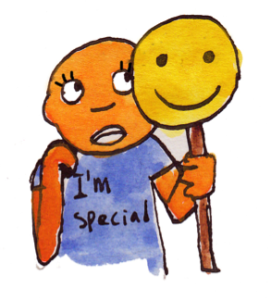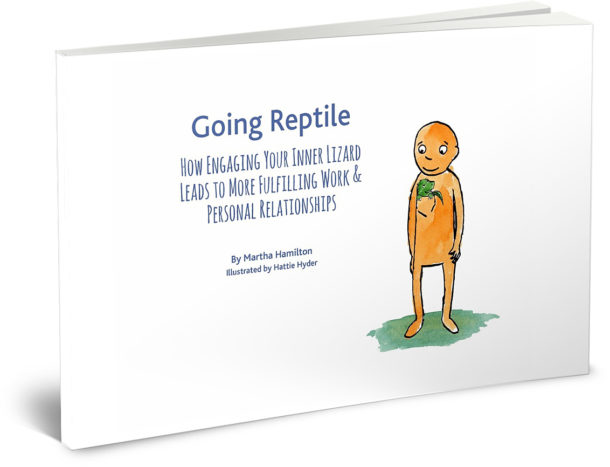David Rock, in his book Your Brain at Work, references research by Mark Beeman:
“People who have more insights don’t have better vision, they are not more determined to find a solution, they don’t focus harder on the problem, and they are not necessarily geniuses. The “insight machines,” those whom Beeman can pick based on brain scans before an experiment, are those who have more awareness of their internal experience.”
In this series, we’ve been reviewing the different ways that we react to stress and uncertainty. VUCA, or volatility, uncertainty, complexity and ambiguity, is rampant these days. It seems like it’s wherever we look. In order to better navigate this new world, we need to develop our capacity to responds to VUCA situations creatively.
This is not easy. But it’s possible. And the first step is getting to know the “Styles” in which we tend to react. This may seem counter-intuitive, but it’s true. When we get to know our ways of reacting, we create space that allows our patterns to begin to loosen. The more we attempt to suppress our reactions, the stronger the reactions and patterns get.
Why should you care about how you react?
When we react, we diminish our access to our pre-frontal cortex – the part of our brain that helps us navigate uncertainty and complexity. We’re wired this way for safety. It’s a “feature” of being human. If our pre-frontal cortex is progressively going offline, we lose access to the functions that we need most. It’s like that little colorful wheel that spins on my Mac sometimes. When it’s spinning, nothing gets done. Our pre-frontal cortex going offline does not bode well for our ability to navigate the situation optimally.
The Fawn Styles
In my book Going Reptile, I put our reactions to stress into four main categories – the Four F’s:
- Fight – I get aggressive
- Flight – I withdraw
- Freeze – I shut down
- Fawn – I get eager to please
Each of these 4 F’s, show up in distinctive ways in different people; and often change, depending on the situation. We’ve reviewed the Styles for the Fight, Flight and Freeze categories in previous posts. In this post, we’re going to begin our exploration of the Fawn category. (If you’re new to the series, you may want to start here.)
The Fawn styles show up as working to please others as a way to stay safe. Some of us learned at an early age to feel safe by making sure that the folks around us were happy. As children, this makes a lot of sense – keep the caregivers happy and the child gets rewarded with appreciation – or breathes easier in de-escalation. Children are smart, and are wired for safety and adaptation, as needed. As adults, always aiming to please those around you can become a bit wonky if you’re not aware of what is happening. Remember, these reactions are often automatic – so well practiced that they feel normal to us, so we don’t notice that it’s happening.
As you begin to notice how you react, at first it can be uncomfortable. You might find yourself say “Do I really do that?” and perhaps notice that you’re experiencing self-judgment or shame. It’s uncomfortable, and pretty normal. As you notice more, and be gentle with yourself, the reactions will begin to loosen.
The good news is that as the reactions loosen, more of our pre-frontal cortex stays online, and you have more bandwidth to address the VUCA issues.
Let’s take a look at the first of the Fawn Styles: The Special One.
The Special One
As we progress through the styles, they become more subtle. The Fawn Styles can be a little harder to detect. It’s not as obvious  as someone who is exploding into aggression or walking out of a room.
as someone who is exploding into aggression or walking out of a room.
The style I call The Special One shows up as someone who needs to feel unique and elevated to feel safe. They might wax eloquently about all the amazing things they have done for you, or make sure you know what they are doing. On the receiving end of this style, you might feel well attended to, supported, and cared for.
This might show up as being the office “brown-noser,” always sucking up to the boss, which often frustrates fellow colleagues It can be hard to remember that this person is doing all they can to feel safe. We all have our own unique styles we’ve developed to feel safe. It’s just that the fawn styles are particularly difficult to recognize from the inside.
If you’re wondering whether you employ this Style, start paying attention to how you interact with those you perceive to have power. Do you work hard to keep them happy with you? Do you double down your efforts to make sure they are seeing you as special, and find yourself relaxing when their feedback makes you feel like you are? Do you get anxious or panic when it appears that they are not happy with you?
On one level, we all do this. The question is whether we do this when we feel unsafe, and, in the process, begin to divert resources or bandwidth from our pre-frontal cortex. If that is the case, working to create safety while losing access to the very functions we need online may not be in our best long-term interests. No matter which style we employ.
What can one do? Here are a few suggestions:
Observe: Get to know the reactive styles that are showing up in yourself, and those around you.
- What do you notice?
- How do you or someone else show up in different stressful, uncertain, or threatening situations?
- What do you feel as you notice? Disgust, Blame, Irritation, Judgment, Shame or Gentleness, Compassion or Understanding? Just notice. Don’t try to change anything. Just notice what is coming up.
Understand: Reactivity is wired into us by design. It is not a flaw; it’s a human safety feature. The question is whether the reactions that supported us when we were younger still serve us now, particularly in a work or relational context. As you notice, ask yourself, “Does this reaction still serve me?” Again, just notice. Don’t try to change anything.
What we resist persists: If you find yourself doing all you can to be seen as special, unique, and elevated, you are in the middle of this dynamic. For some of us, this is so “business as usual” that it may be hard to recognize as a contributing factor to the very issues that we need to address. Be gentle with yourself and continue to pay attention to what happens and when.
Get to know your styles: This brings us back to observation. Compassion is central to loosening reactive styles. If you shame or blame yourself or others for how they react, the safety styles – the reactive patterns – become more entrenched and more clever. Their job is protection. They do it well. Practice noticing these reactive styles of navigation. See if you can gently appreciate that they were created for really good reasons – even if they don’t seem to serve you, your family, team, or organization in the present.
It’s rather easy to recognize someone who has an outburst of aggression. It’s a lot harder to recognize yourself when you are attempting to stay safe by being held as unique and special. Yet, both reactions have a similar effect – the pre-frontal cortex goes offline more and more as the reaction grows in intensity. And, as we’ve learned, we need our pre-frontal cortex online in order to navigate effectively.
In the next post, we’ll move on to the second of the Fawn Styles.

